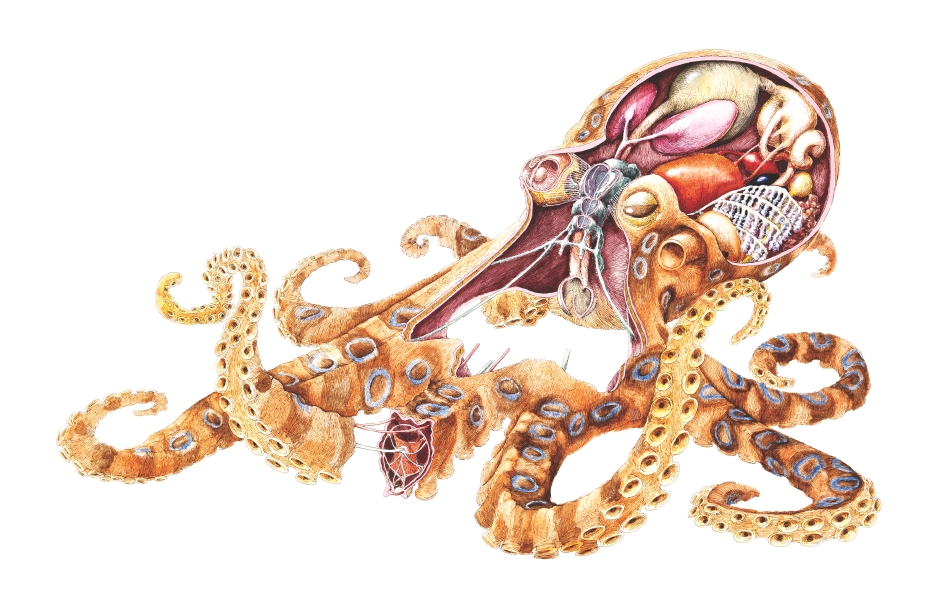See inside an octopus

[fototag id=”insideanoctopus”]
Octopuses are the superheroes of the animal kingdom, with so many amazing abilities and adaptations that it begins to look greedy. They can solve mazes, open screw-top jars and use tools. They can walk, they can swim and they can even jet propel themselves at high speed. They can change colour, imitate other animals, squirt ink, inject poison and jettison their own legs. When you can do all that, who cares if you can predict football results or not?
Although they are molluscs, octopuses don’t have a shell or bones and the only hard part of their body is a small beak, made of keratin. This allows them to squeeze through extremely small gaps – an octopus a metre across can pass through a tube the size of a 50 pence coin. Octopuses mainly eat crabs and small fi sh that they winkle out of crevices in rocks and coral reefs, but they can also tackle small sharks by enveloping the shark’s gill openings and suffocating them.
Octopus blood uses a greenish-blue copper pigment called haemocyanin, instead of the iron-based haemoglobin in our own blood. Haemocyanin can’t carry as much oxygen as haemoglobin, but it is actually more efficient at low oxygen concentrations and in cold water. Despite this, octopuses have poor circulation and quickly run out of energy. This may be one of the reasons for their intelligence – theydon’t have the stamina for a prolonged chase and must rely on their cunning. Male octopuses die almost immediately after mating. The females are even bigger martyrs. They guard their 20,000 eggs for a month and rather than leave the nest to hunt, they will eat some of their own legs. After that, the female dies and the eggs hatch into babies approximately the size of a walnut.




